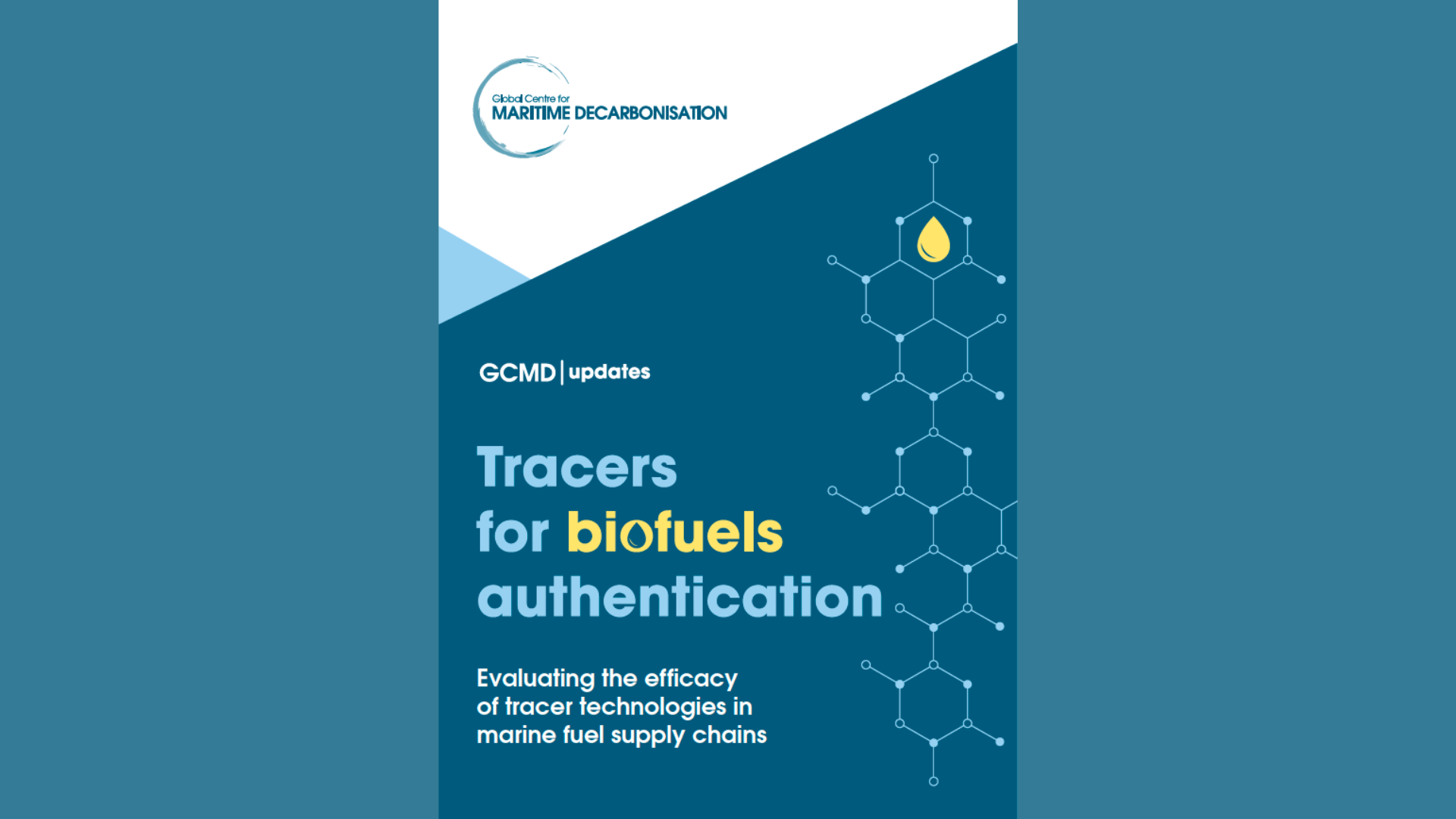The Global Centre for Maritime Decarbonisation (GCMD) has released a new report describing the world’s first field validation of tracer technologies in marine biofuel supply chains.

Conducted in Singapore, Rotterdam, and other major bunkering hubs, the trials demonstrated that tracers can be integrated into existing marine biofuel supply chain practices without disrupting operations or compromising fuel quality.
The trials assessed three distinct tracer candidates and found the organic tracer to be the most practical solution for tracking authenticity and quantity of biofuels, offering an optimal balance of cost, detectability, and scalability.
The trials form a key part of GCMD’s initiative to develop a comprehensive assurance framework for drop-in green fuels. The initiative aims to provide quality, quantity, and greenhouse gas (GHG) abatement assurances to address adoption barriers in biofuels. Across the six trials, a total of 10,400 MT of biofuel blends was bunkered, and a collective 24% of GHG emissions reduction was realised compared to using conventional fuels.
Liquid biofuels, specifically fatty acid methyl esters (FAME) and hydrotreated vegetable oils (HVO), are among the most viable near-term solutions for maritime decarbonisation. They are commercially available, can be blended with conventional marine fuels, and are compatible with existing bunkering infrastructure and shipboard systems.
Current sustainability certification schemes, such as the International Sustainability and Carbon Certification (ISCC) and the Roundtable on Sustainable Biomaterials (RSB), play an important role in verifying emissions reduction of biofuels and compliance with regulatory mandates, such as EU RED II. However, these schemes lack physical, field-level verification, leaving biofuel supply chains vulnerable to adulteration, and their emissions reduction double-counted to support false subsidy claims.
Recent high-profile fraud cases have underscored the need for standardised, field-verifiable methods to augment the certified sustainability claims of these biofuels.
GCMD’s trials directly address this gap by deploying tracers and assessing their capability for providing physical proof to both identify authenticity and quantify biofuel volumes.
GCMD trialled three tracer candidates — synthetic DNA (Tracer A), element- based metalloid (Tracer B), and non-fluorescent organic (Tracer C) — across six supply chain trials, deploying them at the earliest feasible upstream points and tracking them through to storage and use onboard receiving vessels.
In five of the six trials, the tracers were homogeneously distributed in both the neat biofuels constituent and their final blends, confirming their chemical compatibility.
Tracer A was detected at most sampling points in its initial trials, but detection downstream was inconsistent, particularly on receiving vessels. In one trial, the tracer remained undetected despite multiple doses, suggesting possible thermal denaturation of the synthetic DNA or matrix interference from contaminants in fuels.
Tracer B was successfully detected at all sampling points and showed the highest tolerance to harsh operating conditions typical of marine fuel environments. However, discrepancies of 30-40% between expected and detected concentrations, particularly at the low parts-per-billion (ppb) deployment levels, point to the need for further optimisation for robust quantification.
Tracer C was consistently detected at all sampling locations. At deployment concentrations below five parts-per-million (ppm), detected values closely matched expected concentrations, with discrepancies less than 5%. Its robustness, combined with cost competitiveness and detectability with commonly administered Gas Chromatography-Mass Spectrometry (GC-MS) tests, suggests that Tracer C holds significant potential as both a reliable identifier and quantifier in marine fuel supply chains.
Using data collected from these trials, GCMD developed an actionable comparative benchmarking framework to guide stakeholders in tracer deployment.
The framework enables objective comparison across tracer types on cost, detectability, and operational feasibility. It also assists in the identification of optimal deployment scenarios and offers proven implementation pathways to reduce adoption risks.
To enable robust and widespread deployment, strong institutional support is essential, says GCMD. This includes establishing legislation for controlled tracer deployment, standardised protocols for dosing, sampling, and detection, seamless workflow integration, and shared data systems for real-time verification and auditability.


